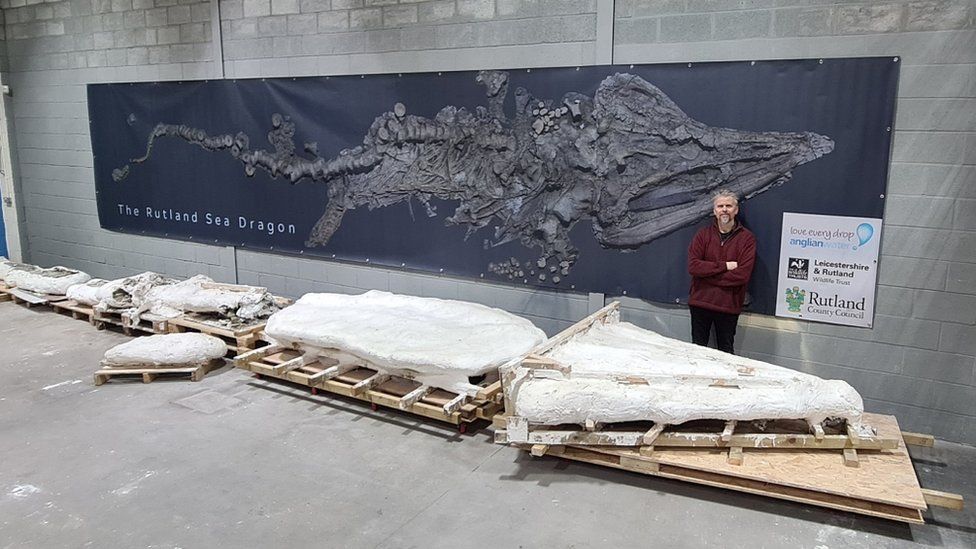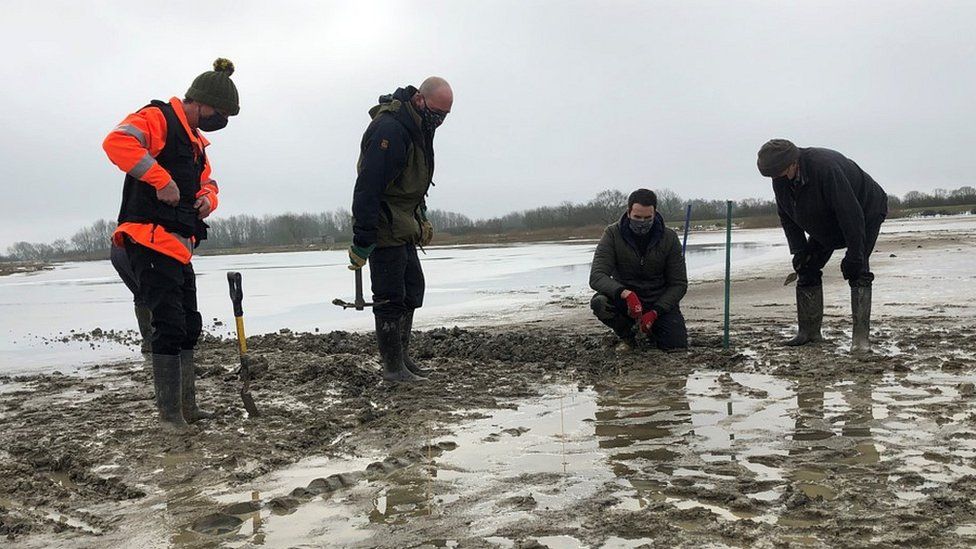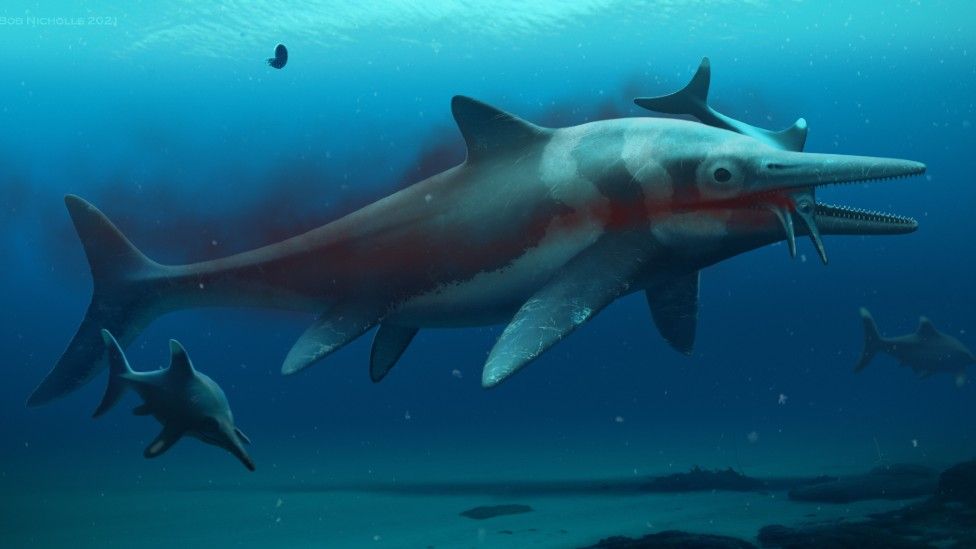There be Dragons...
"Despite the many ichthyosaur fossils found in Britain, it is remarkable to think that the Rutland ichthyosaur is the largest skeleton ever found in the United Kingdom. It is a truly unprecedented discovery and one of the greatest finds in British paleontological history.""Not only is it the largest ichthyosaur skeleton ever found in Britain, but it is also the most complete skeleton of a large prehistoric reptile ever discovered in the U.K.""And yes, that includes dinosaurs."Dr.Dean Lomax, paleontologist, United Kingdom
 |
| Nigel Larkin said the skeleton's permanent home would "need to be somewhere quite big" Photo: Nigel Larkin |
Ichthyosaurs were first identified in the 19th century by the paleontologist Mary Anning. They were marine reptiles living in Britain 250 million years ago, and 90 million years ago became an extinct species. They are often called Sea Dragons, characterized by large teeth and eyes, ranging in size from one to over 25 metres. Capable of growing to truly gigantic size and an obviously formidable predator of its time.
A current discovery has led to great celebration in Britain surrounding one of the "greatest finds" in paleontological history following the discovery in Rutland of a skeleton of an intact skeleton of a 180-million year-old sea dragon measuring ten metres in length, its skull weighing in at about a tonne. The largest, most complete fossil of any marine reptile discovered in Britain.
 |
| The first bones were found during the mud and frost of February Photo: Natalie Turner |
Joe Davis, an employee of the Leicestershire and Rutland Wildlife Trust discovered the skeleton during a routine drainage of a lagoon island in February 2021 at Rutland Water. It is a "highly significant discovery both nationally and internationally", noted Dr. Mark Evans of the British Antarctic Survey.
"It's not often you are responsible for safely lifting a very important but very fragile fossil weighing that much", remarked Nigel Larkin, a specialist paleontological conservator. Team members at Leicestershire and Rutland Wildlife Trust were uncertain of the origins when they first located the remains sticking out of clay, and they suggested initially that what they were looking at could possibly be pipes.
 |
| Ichthyosaurs were top of the food chain in the seas of the Jurassic period Anglian Water |
Experts from the University of Leicester were called in and the ichthyosaur skeleton was professionally identified. A team of expert paleontologists from around the U.K. dug out the remains in August and September, working in partnership with Anglian Water, Rutland Country Council and the Leicestershire and Rutland Wildlife Trust, supported by volunteers experienced in excavating fossil marine reptiles.
The remains of ammonites and belemnites -- squid-like animals which may have been nibbling on the animal's remains -- surrounded the skeleton. During the initial construction of Rutland Water two incomplete and much smaller ichthyosaurs were discovered in the 1970s, despite which it was declared unusual to find a specimen of this kind in the Midlands.
 |
| Dr. Dean Lomax with the skeleton of Temnodontosaurus trigonodon. Image credit: Anglian Water / Leicestershire and Rutland Wildlife Trust / Matthew Power Photography, www.matthewpowerphotography.co.uk. |
Labels: Ichthyosaur Skeleton, Midlands, Palaeontology, Rutland Water, Sea Dragon, United Kingdom

0 Comments:
Post a Comment
<< Home